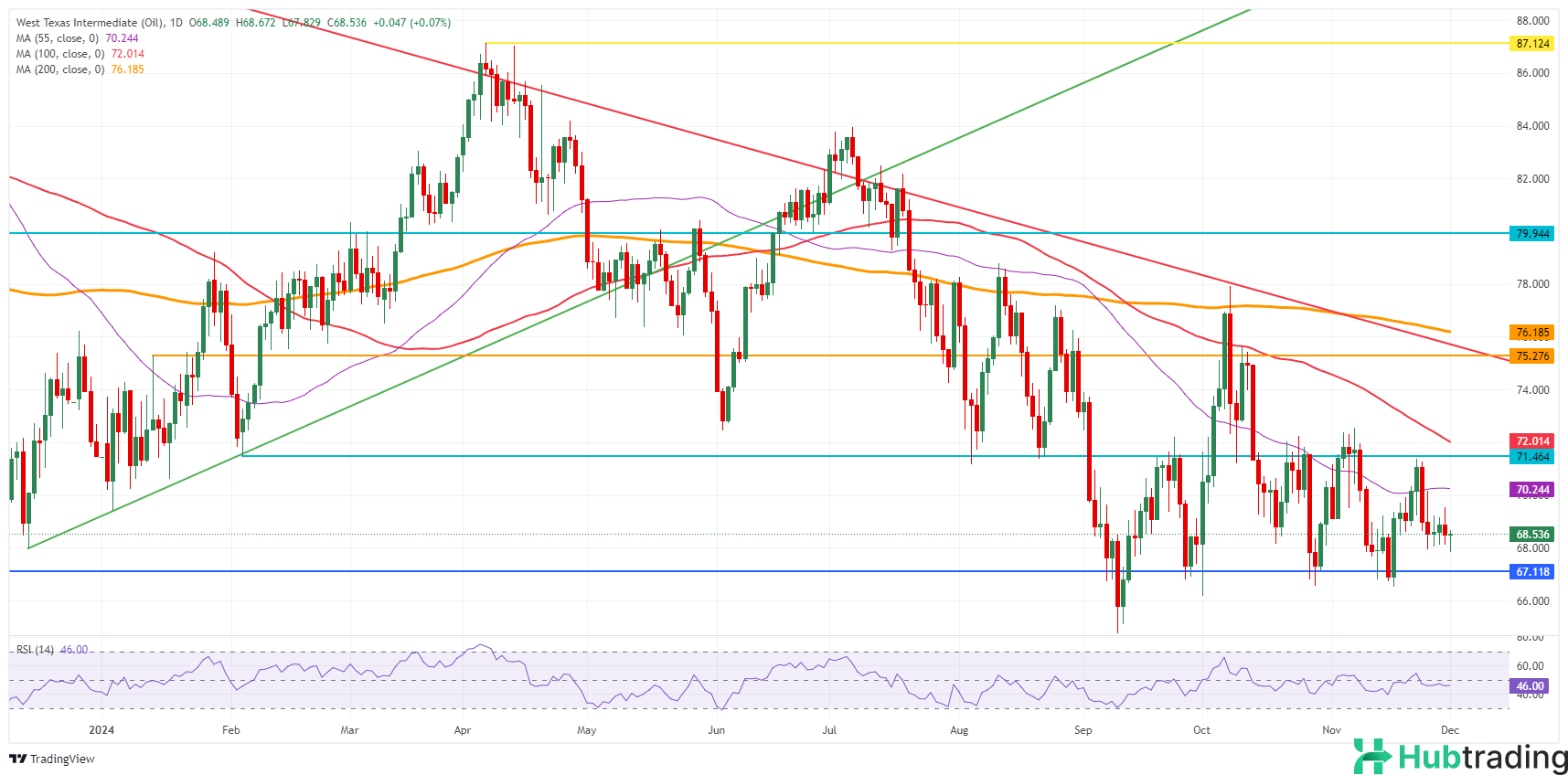- Oil prices steadied on Monday ahead of Thursday’s virtual OPEC+ meeting, where members will decide on extending production cuts.
- Iranian official Afshin Javan blamed OPEC+ for the bleak forecast for oil prices and consumption in 2025.
- The U.S. Dollar Index strengthened as Trump threatened BRICS with tariffs, while the Euro faced pressure from France’s budget concerns.
Crude oil prices remain confined to a tight range on Monday, mirroring last week’s levels, as markets await Thursday’s pivotal OPEC+ meeting—the most significant ahead of 2025. Adding to the tension, Iranian official Afshin Javan stirred controversy by publishing an opinion piece blaming OPEC+ for the current low oil prices. Javan argued that OPEC+ has kept prices elevated for too long, inadvertently funding competitors to develop cheaper energy alternatives. His remarks are expected to spark intense discussions during the upcoming meeting, where members will decide whether to extend production cuts.
Meanwhile, the U.S. Dollar Index (DXY)—which tracks the USD against a basket of major currencies—gained momentum after Donald Trump threatened to impose tariffs on BRICS nations if they move forward with plans to replace the dollar with a new reserve currency.
The Euro, a key component of the DXY, is under pressure amid rising political uncertainty in France. Marine Le Pen has warned she may back a no-confidence vote unless the government agrees to certain budgetary demands. In response, French Finance Minister Antoine Armand stated on Bloomberg TV that France will not be “held hostage.” However, the political instability has already impacted markets, with investors pricing in higher risk for French sovereign debt.
As of now, West Texas Intermediate (WTI) crude is trading at $68.41, while Brent crude stands at $72.35.
Oil News & Market Movers: Iran Highlights Growing Concerns
- Afshin Javan, the deputy head of Iran’s OPEC+ delegation, published a thought-provoking opinion piece on November 26, which Bloomberg spotlighted on Monday. Javan criticized OPEC+ for creating a self-inflicted supply glut after years of production cuts. “This strategy to support prices has inadvertently boosted supply outside the group, particularly from the U.S.,” he stated.
- Poland has partially shut down the Druzhba pipeline following a reported leak, according to Bloomberg. Polish media and local firefighting services confirmed their response to the incident on Sunday.
- OPEC+ will convene online on Thursday to decide the future of its production curbs for 2025, with debates expected to be intense following recent market developments.
Oil Technical Analysis: OPEC+ Faces Internal Turmoil
Crude oil prices remain constrained within a narrow range as internal divisions within OPEC+ appear to be growing. With Iran’s recent public criticism, Thursday’s meeting is expected to be contentious. However, OPEC+ has limited options to adjust production curbs significantly, increasing the likelihood of further declines in oil prices.
On the upside, key resistance levels include the pivotal $71.46 mark and the 100-day Simple Moving Average (SMA) at $72.01. A more significant resistance lies at the 200-day SMA at $76.18, though any rally toward this level could face resistance around $75.27.
On the downside, initial support is seen at $67.12, a level that held firm in May and June 2023. A break below this could expose the year-to-date low of $64.75, followed by the 2023 low of $64.38.






